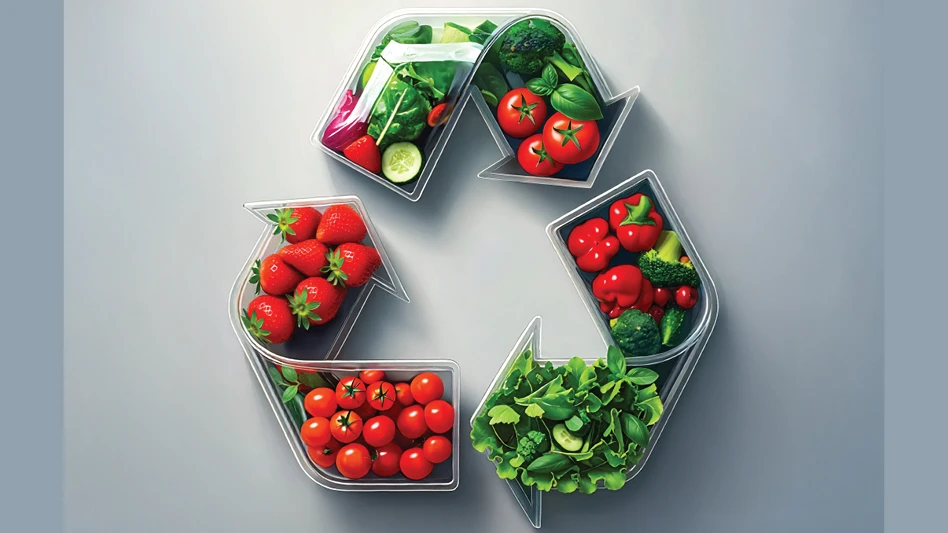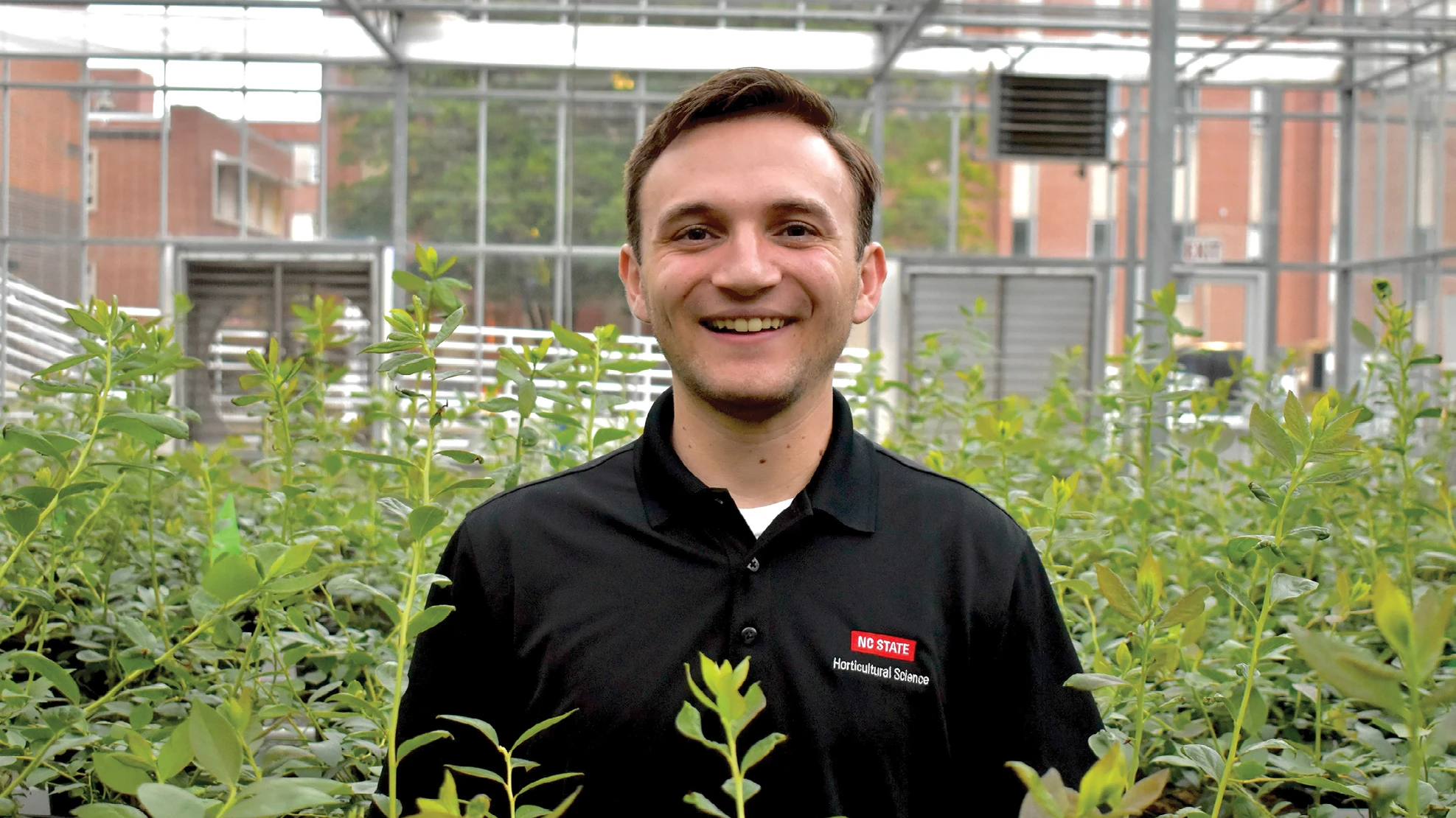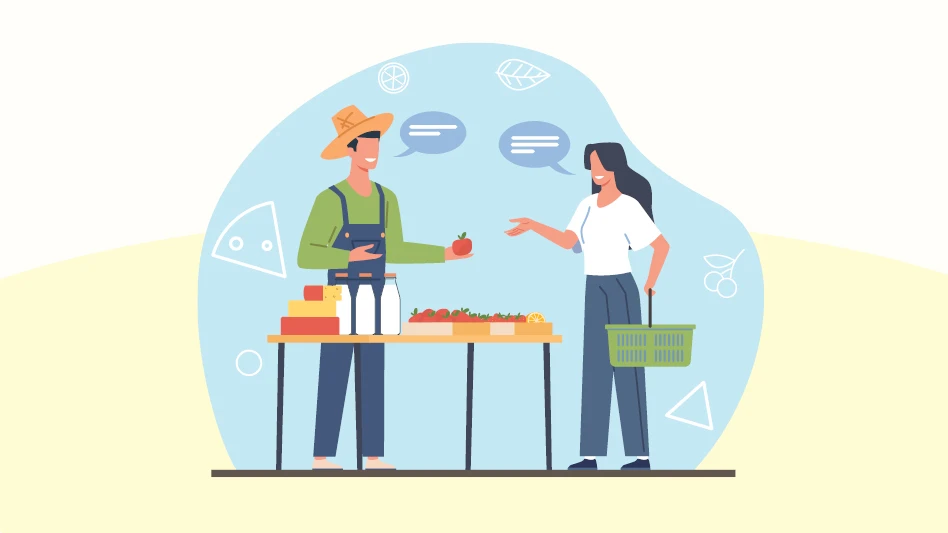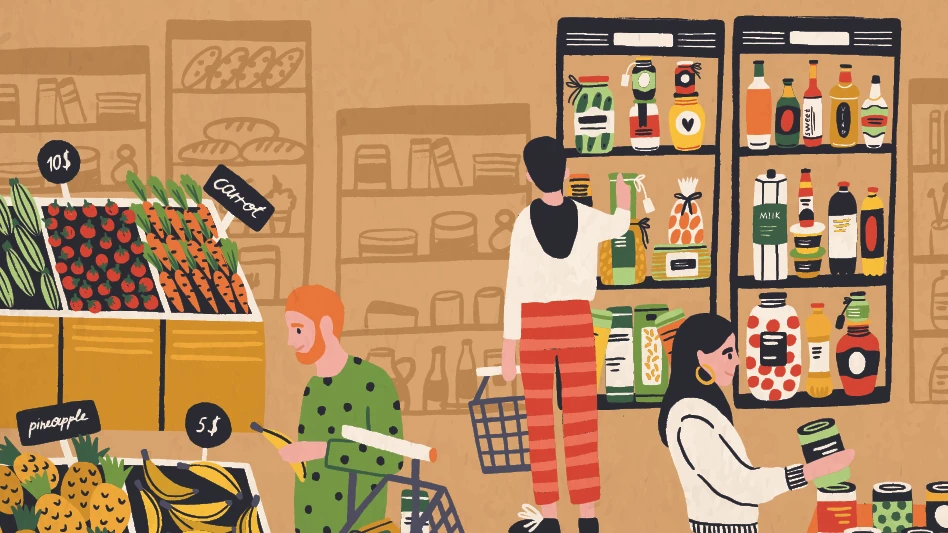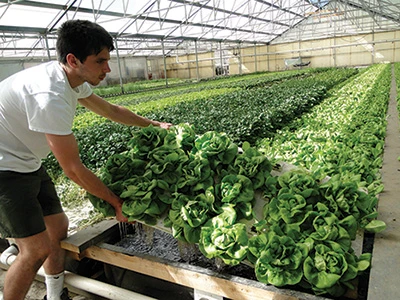
 In Malcolm Gladwell’s book, The Tipping Point, Gladwell describes how an idea can reach a “moment of critical mass,” where the stars seem to align and a certain idea, or product, is embraced by the larger populace. This appears to be the case with aquaponics, a form of agriculture that effectively combines fish culture with hydroponics.
In Malcolm Gladwell’s book, The Tipping Point, Gladwell describes how an idea can reach a “moment of critical mass,” where the stars seem to align and a certain idea, or product, is embraced by the larger populace. This appears to be the case with aquaponics, a form of agriculture that effectively combines fish culture with hydroponics.
“I think we’re going to start seeing commercial aquaponics explode,” says Meg Stout, chairman of the Aquaponics Association and author of The Complete Idiot’s Guide to Aquaponic Gardening.
Aquaponics is a “bio-integrated” system that combines aquaculture and hydroponics symbiotically, so that one literally feeds off the other, in a self-sustaining fashion. In this system, fish, vegetables, flowers, and/or herbs can be grown for market under the protection of a greenhouse covering.
Aquaculture meets hydroponics
Hydroponics involves growing plants in a soilless medium, such as perlite, rockwool, gravel, and more recently, coconut coir. (See “Hydroponicsfor a changing market,” page 14.) Plants are fed via a liquid nutrient delivery system and grown by different hydroponic systems or methods based on a grower’s situation and preference, including the nutrient film technique (NFT), floating rafts, and noncirculating water culture. A thorough understanding of the pros and cons of these systems is important before starting up an aquaponics growing operation.
 Aquaculture, as defined by Merriam-Webster, is the rearing of fish, shellfish, and some aquatic plants to supplement the natural supply. Fish are reared in controlled conditions and though many government agencies practice aquaculture to stock lakes and rivers for sport fishing, most aquaculture supplies the commercial food market. It also supplies goldfish and other decorative fish for home aquariums and bait fish for sport and commercial fishing. The plants that are most adaptable to this model of farming are lettuce, specialty greens (spinach, chives, basil, and watercress), and herbs. Plants that yield fruit (tomatoes, bell peppers, and cucumbers) are grown in larger, well-stocked aquaculture systems that generate the higher nutrient volume needed for production.
Aquaculture, as defined by Merriam-Webster, is the rearing of fish, shellfish, and some aquatic plants to supplement the natural supply. Fish are reared in controlled conditions and though many government agencies practice aquaculture to stock lakes and rivers for sport fishing, most aquaculture supplies the commercial food market. It also supplies goldfish and other decorative fish for home aquariums and bait fish for sport and commercial fishing. The plants that are most adaptable to this model of farming are lettuce, specialty greens (spinach, chives, basil, and watercress), and herbs. Plants that yield fruit (tomatoes, bell peppers, and cucumbers) are grown in larger, well-stocked aquaculture systems that generate the higher nutrient volume needed for production.
There are several fish species, both cold and warm water, adapted to an aquaponic system, including trout, perch, tilapia, Arctic char, and bass. Tilapia appears to be one of the better adapted fish species for these recirculating systems.
Combining aquaculture with hydroponics gives farmers the potential to grow a highly marketable crop of fish, vegetables, and herbs that can be sold at farmer’s markets and local retail outlets.
Sustainable system of growing gains recognition
Aquaponics will always be a niche market, says Donald Bailey, research specialist at the University of the Virgin Islands, and won’t replace the need for the acres upon acres of food production we see in the Midwest and California. However, it is a sustainable system that recognizes a global need to recover and reuse water and waste products.
The aquaponics model is a mutually beneficial system for aquaculture and hydroponic systems. The fish tanks produce nutrient-rich effluent that is used to fertilize hydroponic production beds in vegetable producing houses. The nutrients generated from the fish manure, algae, and decomposing fish feed are contaminants that would otherwise become toxic in the fish tanks; instead, they will become liquid fertilizer for the hydroponically grown plants.
We’re not done yet. The water going into the hydroponic beds is being filtered by the plants, removing ammonia, nitrates, nitrites, and phosphorous. The filtered water can then be pumped, or otherwise recirculated, back into the fish tanks in a win-win situation whereas fresh, nutritious food is produced in both systems and made available to consumers, which ultimately benefits the local economy.
It’s these factors—a combination of a strong local food movement that relies heavily on organic food production, the need to conserve water, especially in arid regions, and a change in food safety laws—that have brought aquaponics to a tipping point.
“Aquaponics significantly reduces the amount of water used to both farm fish and raise plants without soil (e.g., hydroponics),” says Stout. “As hydroponics already uses as much as 90 percent less than conventional soil farming, it is often stated that aquaponics can reduce water consumption associated with food production by as much as 90 to 95 percent.”
She adds the benefit of a more defined food safety policy: “Now that the CanadaGAPTM audit can be used to obtain Food Safety certification for aquaponics, existing aquaculture operations can reasonably add an aquaponics element to reduce water consumption and produce a cash crop from their waste stream,” says Stout. “We're already seeing aquaculture businesses overseas move in this direction.” (The CanadaGAPTM is a food safety certification program for companies that produce, pack and store fruits and vegetables.)
Not for the novice
Although backyard systems for fish and plant production, (i.e., aquaponics) have been popular among home gardeners and fish enthusiasts for years, commercial aquaponics is not for the novice. There is a fairly steep learning curve because you’re not only combining two systems – fish production and hydroponics – each which require extensive training, you also need a bit of business acumen.
 “We'd first recommend professional training with an industry leader, which will run about $2,000 (course, travel, and housing) for a one week course,” says Stout. “This should give the farmer a solid basis for adapting a basic system to their unique situation.”
“We'd first recommend professional training with an industry leader, which will run about $2,000 (course, travel, and housing) for a one week course,” says Stout. “This should give the farmer a solid basis for adapting a basic system to their unique situation.”
Of course, there is also the expense to get up and running. Like any basic business model, it is essential that you explore your markets before you invest in tanks, houses, and various equipment. Stout says you’re looking at somewhere in the neighborhood of $50,000 to get started.
“I would budget $50,000 for facilities and refine that estimate with current quotes for greenhouse facilities, tanks, filters, grow beds, floating rafts, aeration, and installation of water and electricity,” says Stout.
To learn more about what is needed to get started, Stout, an engineer with experience in hydrodynamics and a background in product development, suggests taking a look at the Southern Regional Aquaculture Center (SRAC) publication on aquaponics (SRAC 454). "There's no need to re-invent the wheel when the federally funded USDA Aquaculture Centers have identified a good working model," she adds.
Stout adds a few words of warning for those considering jumping into aquaponics: “The two major issues we've seen are 1) people starting with a large facility before they had established their market, and running out of credit before they became profitable and 2) people jumping in without investing in training, resulting in sub-optimal and even dangerous designs.”
With design in mind, let’s look at two aquaponic systems that have been popular over the last 30 years of trial and error.
The University of the Virgin Islands (UVI) System
The beautiful Virgin Islands with delightful ocean breezes may be good for tourists, but the island itself doesn’t have the room to support much agriculture, at least not in the way we might think of in California or Iowa. Thus, several years ago, James Rakocy, Ph.D, and associates at UVI, started experimenting with aquaponics as a way to produce food in small spaces. Today, UVI is the leader of commercial-scale aquaponics technology.
Now under the tutelage Donald Bailey, UVI has developed the Deep Water Channel (DWC) system because of the operational complexity of the aggregate system they were using previously, and the ability to scale the DWC system to very large sizes, according to Bailey.
With this self-containing system they raise tilapia in the tanks and use a floating raft system to grow basil, lettuce, okra, and other crops, reporting “outstanding yields.”
The Speraneo system
Tom and Paula Speraneo, owners of S&S Aqua Farm near West Plains, Mo., popularized this method, which became a model for dozens of commercial aquaponic greenhouses and high school biology programs.
 Their commercial solar greenhouse is 50 x 80 feet and contains six 1,200 gallon fish tanks. Each tank is linked to a one foot deep hydroponic bed filled with river gravel. They raise tilapia in the fish tanks and grow basil, tomatoes, cucumbers, mixed salad greens, and an assortment of vegetables, herbs and even bedding plants.
Their commercial solar greenhouse is 50 x 80 feet and contains six 1,200 gallon fish tanks. Each tank is linked to a one foot deep hydroponic bed filled with river gravel. They raise tilapia in the fish tanks and grow basil, tomatoes, cucumbers, mixed salad greens, and an assortment of vegetables, herbs and even bedding plants.
The Speraneos borrowed some of the research experience and expertise from that done at North Carolina State University. The Speraneo system, started in the 90s, is now used worldwide to grow plants and fish for market. A resource packet can be ordered that further explains how this system is set up and operated (see below).
Of the working models that have come to prominence over the past few years, the UVI model has probably been the most documented and is mentioned in SRAC 454. Stout says copying this model is important in securing funding for an aquaponics operation.
“Moving beyond the UVI model, we are seeing a number of small farms that integrate media beds between the fish tanks and DWC grow beds to both support large crops (e.g., papaya trees and banana trees) and help filter the water,” says Stout. “Other farmers are looking at decoupled aquaponics, where the aquaculture component and the hydroponic component can be isolated, if necessary, without harming the other portion of the system. Decoupled aquaponic systems would be most attractive to someone who already had an existing hydroponic or aquaculture facility.”
Do your homework
Whatever setup you choose, be sure to learn as much as you can about aquaponics and have a comprehensive business plan in place before you get started.
“It is very important to be educated and trained in aquaponic system operation,” says Bailey. “There are many aquaponic systems in the “bone yard” of homes and businesses.”
Neil Moran is a horticulturist and freelance writer based in Sault Ste. Marie, Mich.
For more:
- Resource packet for the Speraneo system: S & S Aqua Farm, 417-256-5124
- The Complete Idiot’s Guide to Aquaponic Gardening (2013), Meg Stout
- Aquaponic Gardening A Step-by-step Guide to Raising Vegetables and Fish Together (2011), Silvia Bernstein
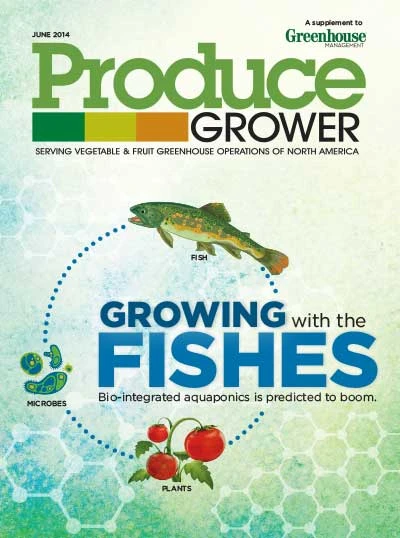
Explore the June 2014 Issue
Check out more from this issue and find your next story to read.
Latest from Produce Grower
- TIPA Compostable Packaging acquires paper-based packaging company SEALPAP
- Divert, Inc. and General Produce partner to transform non-donatable food into Renewable Energy, Soil Amendment
- [WATCH] Sustainability through the value chain
- Growing leadership
- In control
- The Growth Industry Episode 8: From NFL guard to expert gardener with Chuck Hutchison
- 2025 in review
- WUR extends Gerben Messelink’s professorship in biological pest control in partnership with Biobest and Interpolis
